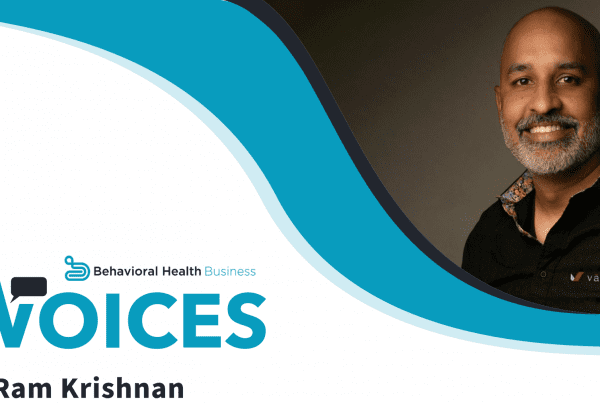The Electronic Health Records (EHR) market continues to boom, however there are still many within the behavioral healthcare industry hesitant to make that next step. One of the biggest (and most justifiable) fears is cost. However, what some practices fail to realize is that the right EHR will increase your profitability in unexpected ways.
Here are four ways that both prescribers and non-prescribers can use a behavioral health EHR to contribute to bottom line growth of their practice.
1. Going Paperless Saves Administrative Staff Time
One of the key benefits of an EHR is that it allows your practice to go paperless, cutting down on the amount of time your staff must spend sifting through paper patient records and other documentation. Transitioning to a paperless practice can save you thousands of dollars per year in office supply expenses, eliminate all transcription costs, and cut down on physical file storage requirements. In order to get to a paperless practice, however, you’ve got to build in processes that will gradually wean your office off paper records.
2. Outcome Data Enables Higher Insurance Reimbursement
It is no secret that chronic diseases such as diabetes and asthma eat up a significant portion of healthcare dollars. What may be surprising is the cost associated with mental health conditions, especially when paired with another chronic disease. Sources state there is a 273% increase in cost for co-morbidity patients that also have a behavioral health diagnosis*.
Why is that important to know? Integrating behavioral health with physical health care has been shown to improve health outcomes and lower costs. That means payors are willing to work off value-based contracts, paying more to mental health providers that can stabilize their patients’ condition and provide the data that proves they are doing so.
How do you generate the necessary data to enable a successful negotiation? When using the right EHR, it is easy to capture, trend, and generate reports showing the decrease in a patient’s severity of symptoms over time, which then arms you with the data you need to negotiate with payors. Insurance companies are hungry to work with practices that can demonstrate their providers’ treatments result in improved outcomes, as they can then market these Measurement-Based Care (MBC) practices within their provider network and use it to differentiate and win business.
See how Valant helped this practice increase revenue by 20% for their value-based care contracts.
Additionally, using software built for behavioral health ensures you can confidently bill commercial insurance plans for the mental health services you are providing. The right EHR makes it easy to document sessions correctly and bill accurately, resulting in higher reimbursement rates for your practice.
3. EHRs Improve Clinical Efficiency
EHRs can also boost profitability simply by saving physicians time at each patient visit, allowing them to see more patients each day. A couple of features that improve the efficiency of practices include:
- Pre-filled templates that let you document common patient symptoms more quickly than writing everything from scratch.
- Automated intake: Many practices still send out 30-page intake packets that the customer must fill out before their appointment. From there, the provider must spend their time reviewing those 30 pages in an attempt to regurgitate a summarized version of the information from that packet into the note. Some EHRs allow you to eliminate that step altogether. For example, Valant’s EHR software takes that intake packet that the client filled out online and automatically synthesizes all the data from it into a concise summary, saving hours of work, potentially, for each client they see. The provider is the final author of the note and can modify it with anything new they learned during the live intake session, but they save a measurable amount of time with this automation provided by the EHR. Read more about this from a provider that recently implemented Valant at her practice.
- Prescriptions go straight to the pharmacy before you have left the patient. Although the time savings on a per visit basis may be relatively small, these minutes can add up quickly. For example, if the time spent with each patient drops from 20 minutes to 18, you can most likely see two more patients each day. Even if this only brings in an extra $100 per patient, revenue per year would increase by $50,000. At the same time, reducing the workload of your staff can dramatically cut down on salary expenses and allow you to focus on revenue-generating activities.
4. EHR Adoption Can Reduce Liability Premiums
A study by the Harvard Medical School in 2012 found that malpractice claims are about one-sixth of their previous rate after adopting an EHR. The study points out that, out of 51 malpractice claims filed during the observation period, two occurred after the adoption of an EHR. The relationship between EHR adoption and malpractice claims is leading malpractice insurers like Texas Medical Liability Trust and MMIC to offer discounts for physicians that adopt EHRs.
Beyond the liability issue is the fact that many believe “failure to adopt and use electronic technology may itself constitute a deviation from the standard of care” in the future. Once this is the case, the laggards will be branded as dinosaurs; more open to scrutiny and at risk of losing patients and reimbursements, all for failure to adopt what everyone else, by then, will consider an essential business tool.
In summary
Once you stop thinking about EHR software as an expense and start thinking about it as a tool that will empower your practice to achieve higher profitability, you’re in a much better place to evaluate solutions. This subtle shift in mindset can make the purchase more compelling and help you ask better questions during the buying process.
Want to see how much your bottom line could increase by using Valant? We would love learn more about your practice and see if Valant can help make your practice even more profitable.





